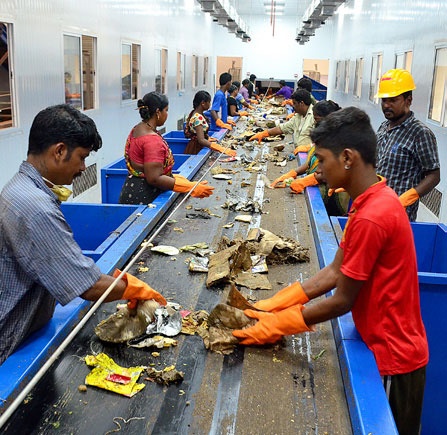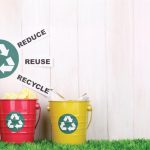The State-of-the-art ultra-modern Garbage treatment plant located at Saligao-Calangute plateau found many admires including the former Union Minister for Environment and Forest (MoEF) late Anil Madhav Dave and Maharashtra Chief Minister Devendra Fadnavis. The facility- first of its kind in Goa- inspired Maharashtra to tackle its increasing problem of garbage, with neighboring State toying up with the idea of having similar facilities in place.
Commissioned on May 30, Goa Statehood Day in 2016- the solid waste treatment plant (SWTP) using foreign technical knowhow- has since its inception processed around 40,000-50,000 tons of waste, while also produced electricity which is supplied to the grid besides being used for captive purpose.
Initially marred with controversies and opposition from the locals, the facility slowly turned out to be huge success- with agencies like Goa State Pollution Control Board (GSPCB) giving it a ‘thumbs-up’.
“The initial analysis reports indicate that the final treated effluent is meeting the standards laid down in the Consent to Operate order. The waste water generated from the industry is treated in well designated effluent treatment plant,” the inspection done by GSPCB reveals.
The facility costing Rs 146 crore, set up by Hindustan Waste Treatment Pvt. Ltd. (HWTPL), was inaugurated by then Defense Minister and incumbent Chief Minister Manohar Parrikar on May 30, last year.
It is based on the mechanical biological treatment (MBT) process. The facility is fully automated, save the manual sorting station where workers segregate dry waste into 12 different categories, including plastic, glass, metal, etc. Bales are made of each of these categories of waste for subsequent sale to vendors.
“It was interesting to visit and know about the Hindustan Waste Treatment Pvt Ltd (HWTPL) plant at Saligao, Goa with Chief Minister Manohar Parrikar,” Fadnavis tweeted; post his visit at the plant, last month.
“This plant processes 120-180 tones of garbage everyday, which is recycled in a scientific way and produces compost and electricity too,” he tweeted further.
“Proper segregation, recovery of recyclables and use of biomethanation technology has been able to produce enough and more electricity to power the entire plant’s operations. The plant has managed to take care of waste generated across all the village panchayats in North Goa,” Calangute MLA and Director of Goa Waste Management Corporation, Michael Lobo told TNV.
Lobo said that now with Waste Management Corporation being set up, all steps would be initiated for proper collection, segregation at source and transportation of waste at the SWTP for treatment. “We are happy that the plant is turning out a big success. And even locals, who were opposing, have slowly started accepting the facility. There is no odour or pollution created,” Lobo explains.
“Efforts are on to achieve our government’s dream of making Goa garbage free by 2022,” the Deputy Speaker stated.
The waste from 25 different panchayats located in the coastal belt of North Goa is been treated at this plant. Apart from the fresh waste, the garbage dump lying at the Saligao plateau is also been treated and cleared off. The beach garbage is also being taken to this plant which is processed.
“We are receiving around 110120 tons of garbage every day which is being treated regularly. We are operational for all the 365 days,” Ganesh Kandaswamy, General Manager (Design and Engineering) said.
The officials at the plant stated that the flow of garbage which was marginal, initially has increased and during the tourism season it had gone to the peak.
As an important step, the plant which was generating the power for its captive use began supplying it to the grid since April 17 this year, which is a milestone in the history of Goa.
The plant is generating 8,000 units of power; of which 4,500 kW is used within the plant while 3,500kW is supplied to the state government.
Kandaswamy said the plant has a capacity to generate additional power if more organic waste is available. “We have one more engine which can be put into action if we require generating more power,” he said.
Presently, the plant generates 340kW an hour, over 7,000kW on a daily basis. The government will pay HWTPL for the 3,500kW at the rate of Rs 2.4 per unit.
“The plant is turning out an asset as far as power supply is concerned. Happy that State is producing power, may be at low capacity,” an official from power department said.
Considering the success of the plant- claimed to be one of its kinds in entire Asia, Government intends to set up three more such plants at Bainguinim (Central Goa), Curca (South Goa) and Verna industrial estate (for industrial and bio-medical waste). While in case of Bainguinim the land is already in possession of Government, the process is on to acquire land at Curca and Verna.
Team TNV



























